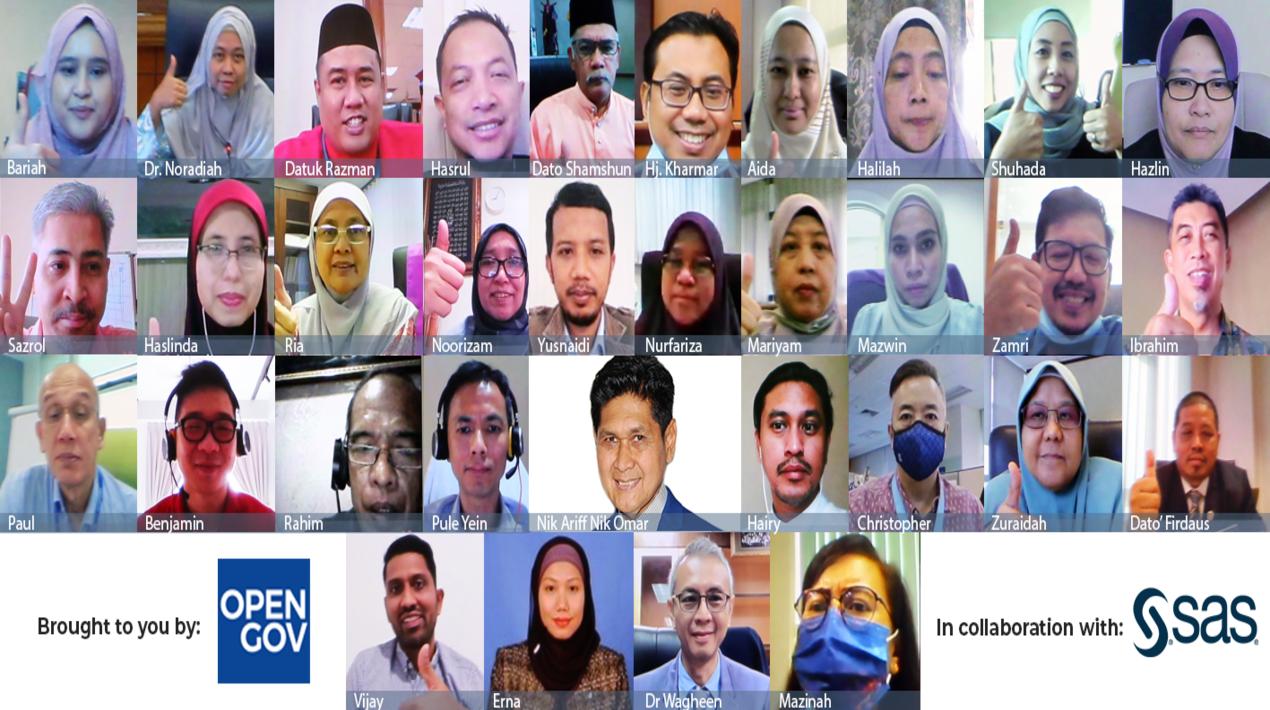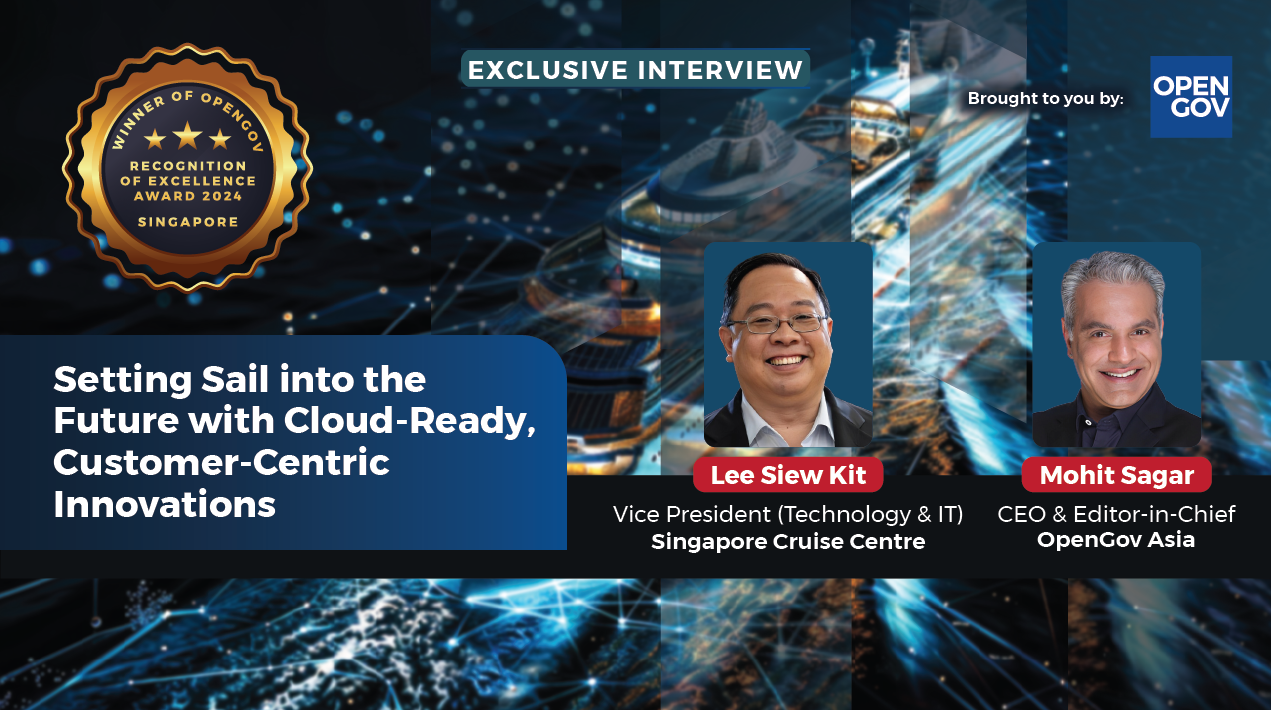
Over the years, technology has revolutionised the world and daily life, giving rise to innovative tools and resources that can aid in everyday endeavours. Modern technology has paved the way for multi-functional devices – computers, phones and smart tools are increasingly faster, more portable and higher-powered than ever before. No doubt, with all this, life is easier, faster and better.
In line with market place progress, the public sector must also adapt as it pursues its mission to serve citizens, ensuring their safety and well-being. Technology related innovation is critical to accomplish this especially in the new normal brought by the pandemic.
With advanced analytics, artificial intelligence and machine learning, governments can put data to work improving outcomes for citizens. Powering governments at all levels, these technologies allow for better, faster and more cost-effective decisions that could make a significant difference in the lives of the citizens.
Malaysia is a nation that has embraced digital transformation wholeheartedly. MyDigital – the Malaysia Digital Economy Blueprint – is a road map for the country’s transformation into a regional digital powerhouse by 2030. It outlines a new and comprehensive approach to existing information and digital technology initiatives.
An integral part is the ramping up of cloud computing services in the public sector. Through its Cloud First strategy, it has targeted the migration of 80% of public data to hybrid cloud systems by the end of 2022. The cloud-first directive will provide for a more effective and smooth data collection and management while helping reduce costs in the long run. Such cloud services will allow Big Data, AI, IoT and other applications to be widely deployed to enhance and strengthen citizen services.
The OpenGov Asia Tech Day on 7 May 2021 aimed to impart knowledge on how public sector agencies could apply real-world AI and analytics applications to provide exceptional citizen services more cost-effectively while guarding against waste and abuse as well as facilitating better outcomes.
This session served as a great peer-to-peer learning platform to gain insights and practical solutions to understand the value of using analytics to extract value from data to make better, faster and more cost-effective, data-driven decisions that make a difference in the lives of the citizens. The virtual event powerfully demonstrated how agencies can turn data into an asset – automating critical tasks, detecting and preventing waste and abuse and embracing efficiency.
Unlocking the Value of Data

To kickstart the session, Mohit Sagar, Group Managing Director and Editor-in-Chief at OpenGov Asia delivered the opening address.
The fact is, well before the current crises, citizens were getting more demanding as they were used to technology making things available anywhere, anytime and on-demand. Further, during the pandemic, government services could not slow down and indeed, scaled up significantly as the need was pressing and essential.
Effective services, relief packages and pandemic counter-measure all rely heavily on data and information. Research shows in the COVID-19 era, more data than ever before, was collected. But in and of itself, data can do nothing. Mohit emphasised users must fully understand what data can do for you. Most people do not know where to start – that is where problems come from. Users need to investigate the depth and scale of data not play on its surface. Governments and their agencies need to understand datasets by incorporating disruptive technologies like Artificial Intelligence (AI) and the Internet of Things (IoT).
Most executives concede that the pandemic gave rise to ad-hoc solutions and band-aid measures. The question, Mohit asks is, can governments run the way they have been running the past few months more efficiently and innovatively? Understanding and the proper utilisation of data can help with that.
In closing, Mohit urged the delegates to find the right partners for their data and digital journey. If they are to stay ahead of the curve, it is vital to work with experts who can guide them along the right path.
Empowering Malaysia with Data Analytics

The delegates next welcomed by Nik Ariff Nik Omar, Director of Sales, Government Linked Companies, Public Sector & Telecommunications, SAS Malaysia.
SAS’ mission, Nik clarified, is to empower Malaysia during this challenging time and also help the country realise its digital potential. Their mission is entirely in keeping with the nation’s MyDigital vision to invigorate the economy that rests on five main priorities:
- Fight corruption
- Mitigate fraud and instil governance
- Increase revenue by reducing leakages and tackling the dark economy
- Improve public safety and security and safeguard the border
- Provide better education, healthcare and environment for diverse citizens
From a SAS perspective, their forte is empowerment with trusted analytics. After 45 years in business, they are convinced that the key is analytics – core to providing insights to solve problems. A staggering 91% of Fortune 100 companies use their services and platforms for data and analytics life cycles of different maturities for their mission-critical use cases.
They have over 15,000 staff to deliver know-how, solutions, services and training with speed, discipline and commitment. SAS has 83,000 successful sites worldwide, including over 160 in Malaysia with 96% satisfaction. The organisation invests 27% in R&D for continued relevancy, producing best in class solutions and to anticipate clients’ future problems now.
Gamification Sessions
The gamification session consisted of three scenarios and three rounds with delegates divided into five city councils. Teams (councils) were provided with a list of solutions to choose from to help resolve their scenario. Solutions had been pre-classified according to optimal/non-optimal answers but were not revealed to the teams. The greater the number of optimal answers chosen by teams as their recommended solutions, the more points they received.
Teams were also able to provide wild card answers which were solutions of their own. The suitability of these wild card solutions would be determined by the game facilitators.
Gamification Session I
Scenario 1 was building a city of the future / smart city. With the increase in population and diversifying of industries and economies, advancement in technology and digitalisation, decision-makers who part of the city council should plan to ensure that the city keeps pace and provide the optimum infrastructure and services to the people, community and businesses.
There was a lot of discussion within each team and divergent views between the teams. After a robust round of discussion and interaction, the optimal solutions were shared:
- Identify all relevant sources of data (internal or external) that are available and relevant
- Obtain additional data that is deemed crucial to paint a clearer and holistic picture
- Prepare the data into a structure ready for analysis/analytics
- Explore the data by applying analytical methods
- Perform further analysis and scenarios with different variables and goals
- Identify key stakeholders that require the analysis and their specific requirements
- Share and collaborate the analysis with other stakeholders to gather further inputs and additional data to refine the analysis
The SAS team also provided some additional insights on smart city development through applying the right tools and key capabilities in visual data analytics. The key capabilities are:
- Data preparation: Access to different data sources, training-validation data partitioning, feature engineering (e.g. parameters, interactions) and variable selection and missing values
- Data exploration and analytics: Discover relationships, trends, outliers, clusters, 3rd-party visualisations, forecasting and scenario analysis, decision trees and text analysis, auto-charting, suggestive visualisations, related measures and automated explanation.
- Interactive reporting: Responsive and precise layouts, dashboard creation, report formatting for user interactivity; filters, prompts, linking, etc, share, interact and collaborate
- Collaboration and info sharing: Mobile apps, desktop applications, web and other collaboration applications
- Predictive analytics
Gamification session II
Scenario 2 saw teams having to utilise analytics to predict and improve outcomes concerning their smart cities. The groups were given a catalyst project – flood prediction. As the first smart project, they were asked to leverage IoT and advanced analytics capabilities to help them predict the outcome planning and budgeting.
After another round of discussion and the teams’ choices tallied, the optimal solutions were shared:
- Define the overall objective, use-cases and key scenarios of the project
- Identify all relevant sources of data (internal or external) that are available and relevant
- Obtain real-time data from either existing equipment or sensors
- Design the overall solution architecture required to cater for the objectives, scenarios and data
- Define the models required for the use-cases and the results you would like to attain
- Develop the models required for each scenario using advanced analytics techniques such as AI/ML techniques to model the prediction
- Deploy the model, refined and improve it along with new data and scenarios
Relating to IoT in smart cities, SAS mentioned that leaders must lower response time and improve operational efficiencies. They should also be aware of the situation by providing real-time visualisation of a data emergency response and automatically alert its staff by having automated triggers on data. They must provide insight to manage preventive maintenance and provide tools and a forecasting model for predictive analysis. Alerting citizens using different media such as online apps and opt-in subscription for residents is also vital. Governments must also downstream regional and state partners for data integration. Lastly, prediction and analysis improvement by creating an anomaly model, predicting incident model and pre-event impact model.
Gamification session III
By completing their first catalyst project using AI/IoT, the councils now look to expand on other smart city focus area. One area that is of high visibility and top of the list of citizens’ concerns is escalating crime and illegal activities. While it is not under the jurisdiction of the city council to combat crime, the city, with its infrastructure (e.g., CCTV) and data (on citizen, location, events, etc.) would be able to provide valuable input for crime detection and prevention.
The teams now look to set up their city’s command centre equipped with the intelligent capability to monitor, detect, alert and prevent criminal events.
Different views and ideas relating to the last scenario were shared between each team. Their selections were tallied once again. The list of optimal solutions for the final scenario was revealed:
- Obtain more data from external sources (other agencies data, social media, news, blogs, etc)
- Setup your “command centre” structure with roles and responsibilities
- Define the entity or events that need to be monitored as high-risk for investigation
- Define criteria or rules for alerting on potential high-risk individual/events
- Determine the minimal attributes of the entity or events to form a case for investigation
- Design workflows to guide your team through defined tasks as they carry out everyday work
The SAS team, again, provided key capabilities of a visual investigator:
- Entity search
- Alert and triage
- Case and investigation management
- Social network analysis
Entities can be alerts, individuals, companies, specific transactions or scenarios. Searches can be performed on any data stored in the solution database. Simple and advanced searches are easily configurable as per user requirements.
Alerts are the ‘smoke alarm’ of the system. It can be generated from a combination of rules, models or manually where required. They are also created based on configuration, calculations scores and thresholds driven by the customer requirements. Each alert will be supported by a comprehensive set of information of why the alerts were generated, entity details, related hits and social network analysis.
Cases can be generated automatically or manually where required. They can be configured to support each capability, audit, investigations, collections etc. Cases can be populated with any of the data available in the solution that is needed to successfully close it and achieve the desired result.
Lastly, not to be confused with Social Media, Social Network Analysis provides a visual representation of the link between entities and other relevant information (such as phone numbers, addresses, relationships etc.) Social Network diagrams are generated automatically for every alert. They can also be manually updated.
Conclusion
The session concluded with a closing address from Nik Ariff Nik Omar. He thanked the delegates in attendance for participating and contributing throughout the session. He was confident that the exercises and discussions gave a deeper understanding of data and the different scenarios that come with it.
Mohit, after announcing the winners of the gamification sessions, also thanked the delegates. He acknowledged that governments are continuously trying to make decisions without having real insights and events, like the OpenGov Asia Tech Day go a long way in helping.
The reality, Mohit emphasised, is not about how much data you have, but about truly understanding the data you gather and store. More likely than not, governments will find the right response by unlocking the true value of data. From the feedback and interaction, he felt that much light had been shed on varying scenarios relating to data. He once again urged delegates to find the right partners on their data journey who could make their experience easier, smoother and effective.
















